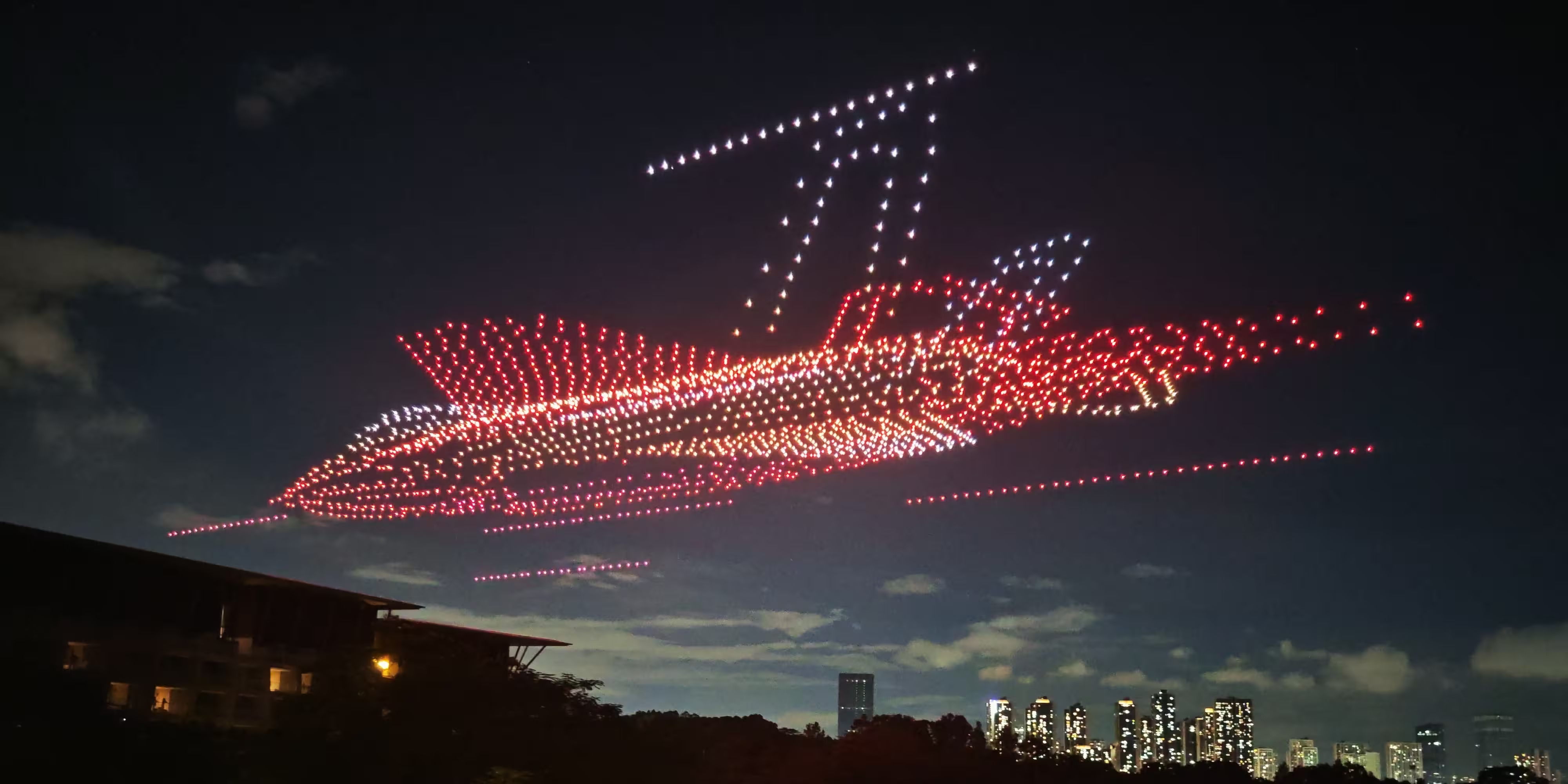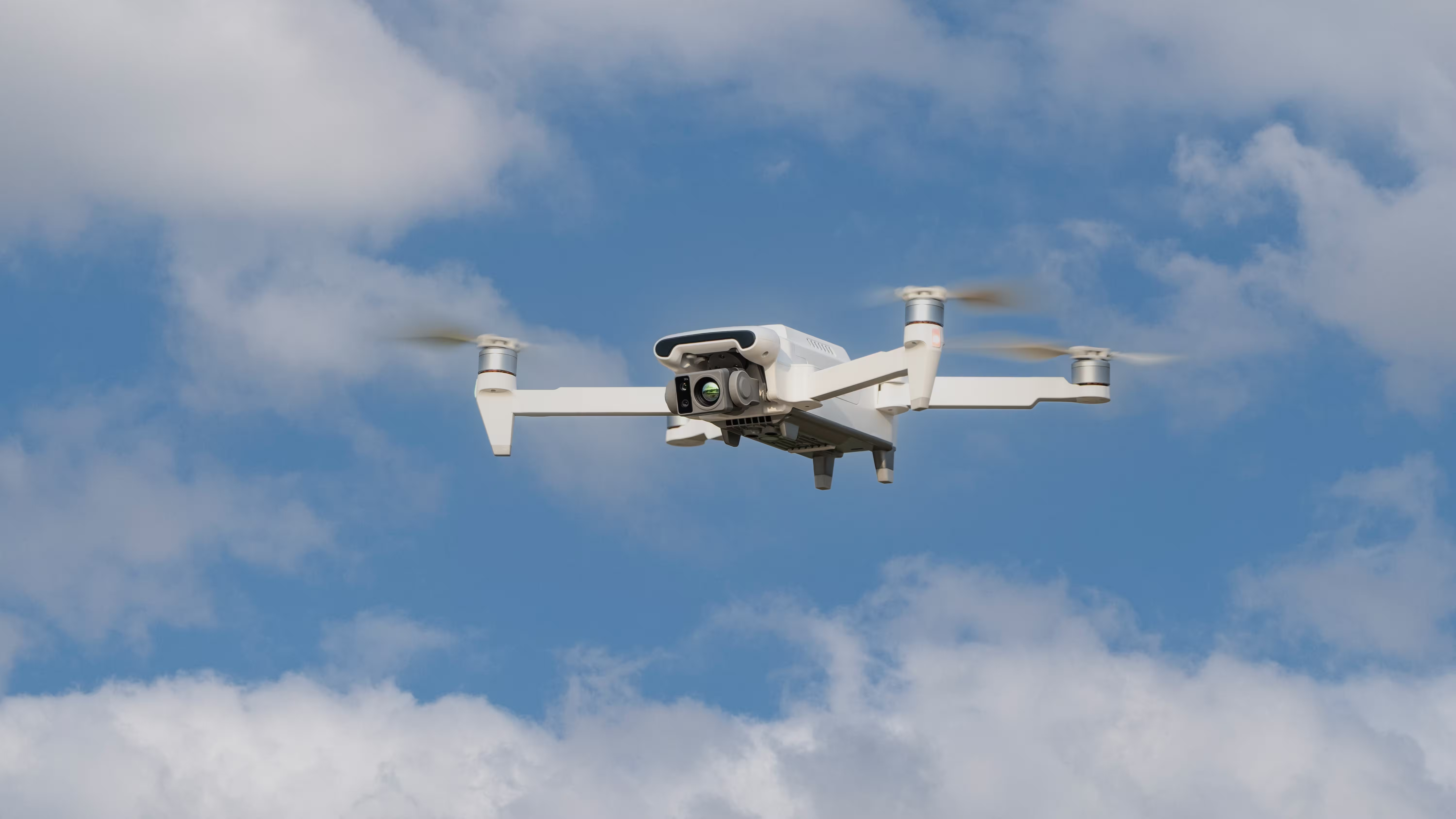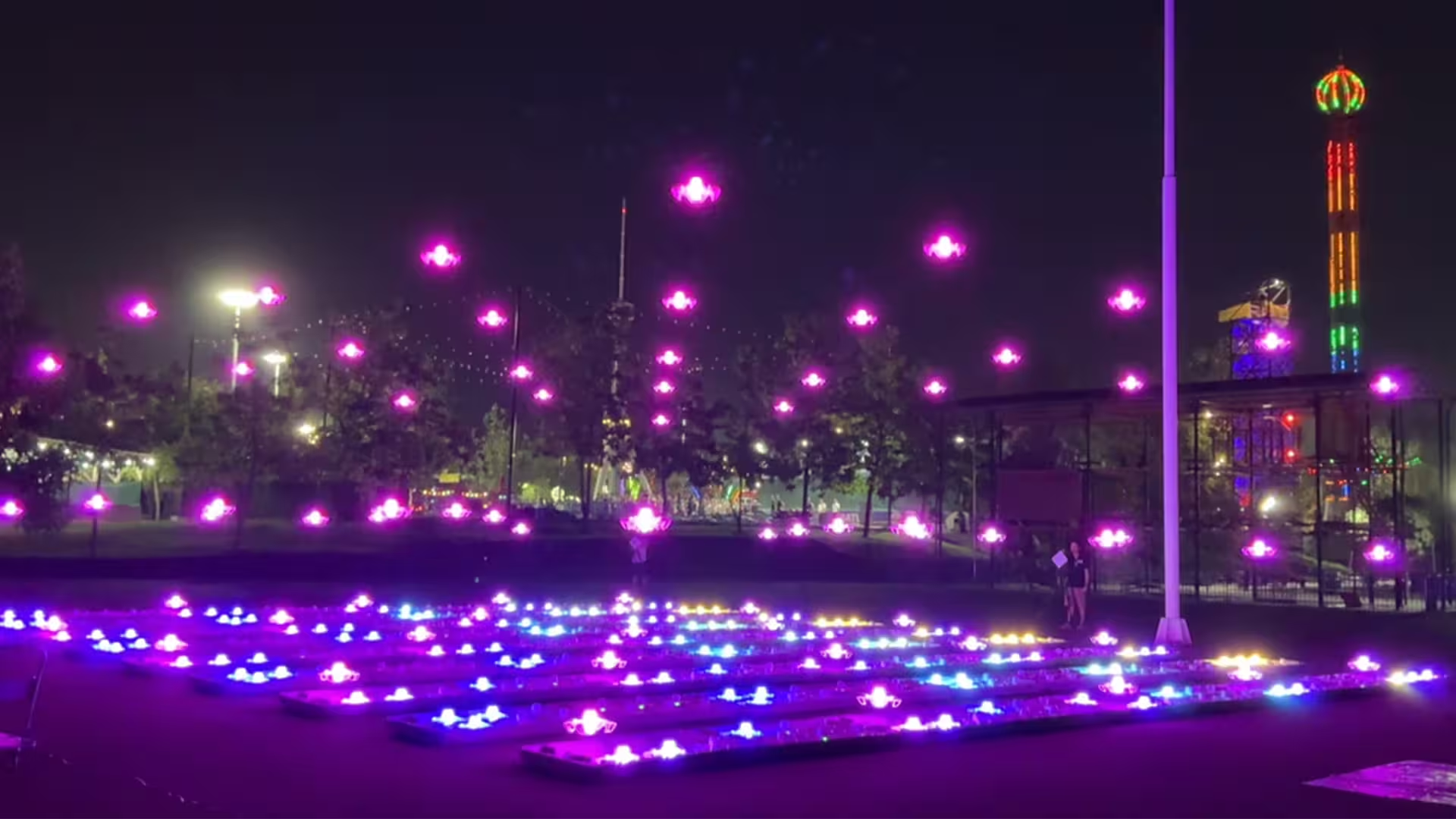Introduction: Precision and Brilliance in the Sky
When hundreds of MMC L1 drones illuminate the skyline in perfect synchrony, what the audience witnesses is not just a light show — it’s a masterpiece of coordination, safety, and technology.
Behind every flawless performance lies a rigorous operational workflow, from meticulous planning to real-time monitoring and post-flight analysis. This article unveils the complete operational process of MMC’s L1 Drone Light Show System, offering insights into how professional teams execute dazzling aerial spectacles with safety, precision, and efficiency.

1. Pre-Flight Preparation: Where Safety Meets Strategy
Mission Planning and Authorization
Every drone light show begins long before the first propeller spins.
The mission manager is responsible for developing a comprehensive flight plan, defining the show area, altitude, timing window, and choreography.
Before launch, formal airspace authorization must be obtained from local aviation authorities, and the event must be filed with the public security department to ensure regulatory compliance.
A risk assessment follows — evaluating environmental conditions such as wind, electromagnetic interference, and crowd density. Emergency protocols are prepared in advance, covering contingencies like strong winds, signal loss, or unexpected intrusion into the flight area.
Site Survey and Deployment
Prior to the show, teams conduct on-site reconnaissance, mapping out takeoff and landing zones, audience areas, and emergency landing points.
To ensure safety, no personnel or vehicles are allowed within a 50-meter radius beneath the performance area, which is cordoned off with visible barriers and patrolled by security personnel.
The electromagnetic environment is assessed using handheld spectrum analyzers to avoid interference from nearby towers or base stations. Stable communication channels are critical — a clean signal means synchronized perfection.
Equipment Inspection and Testing
Each drone undergoes a unit-by-unit preflight inspection, including propellers, motors, and battery integrity. Operators verify signal strength (≥50%), voltage (≥16V), and GPS lock status (RTK+ mode).
The ground control station loads the predesigned choreography via Skybrush Viewer, verifying flight paths, altitude, and speed parameters.
Wireless AP signal coverage is tested to ensure every drone maintains stable communication with the control system.
Before takeoff, batteries are charged using a 20-port charger (charging time 0.5–1h). Once packed, each storage case (holding 12 drones) is checked for power supply and automated takeoff readiness.
Weather and Crew Coordination
Weather checks are conducted 24 hours and 1 hour before flight:
- Maximum wind speed: ≤ level 5
- Visibility: ≥ 3 km
- No precipitation
If conditions are marginal, the show can be postponed or canceled.
Before takeoff, a briefing session ensures all crew — operators, pilots, and security — clearly understand their roles, emergency radio channels, and chain of command.
2. Flight Operations: Synchronizing Technology and Art
Launch and Takeoff
The process begins with multi-role coordination.
The ground control operator announces “Ready for takeoff,” and each team member confirms readiness:
“Pilot ready,” “Security ready,” etc. Once the mission leader authorizes, the system proceeds to ignition.
Using Skybrush Live, a pre-takeoff light and motor test ensures every aircraft’s systems are fully functional. A 30-second countdown is initiated — and when it hits zero, the fleet ascends from their docking cases in unison, marking the start of the show.
If any drone fails to launch, staff swiftly remove it from the area to avoid formation disruption.
In-Flight Execution and Monitoring
Once airborne, the L1 fleet transforms into a living canvas of light and motion.
Drones autonomously execute 3D choreography, forming intricate patterns like city landmarks or brand logos, while their RGBW lighting system blends color gradients with 800-lumen brilliance.
Operators continuously monitor:
- Signal strength and GPS precision (horizontal ±5 cm)
- Battery levels with real-time low-voltage alerts
- Formation spacing (1.5–2.2 m) for optimal safety and visual symmetry
In case of anomalies — GPS interference, strong winds, or system errors — pilots can manually override using handheld controllers to safely guide affected drones to designated emergency zones.
The control station also supports one-click emergency landing or return-to-home commands.
Return and Landing
As the finale nears, the ground control system announces:
“Remaining time: XX minutes.”
Drones automatically return to their designated docking boxes, guided by RTK-GPS precision (vertical accuracy ±6 cm).
They descend one by one, gently touching down and powering off automatically.
Operators then conduct a quick inspection, remove batteries, and place them into fireproof safety containers.
3. Emergency Protocols: Prepared for Every Scenario
Signal Loss
If a drone loses communication with the control station, it automatically initiates fail-safe return mode.
Pilots can manually take control to guide it safely away from crowds.
Low Battery Alert
When voltage drops below 14V, the system automatically detaches the drone from formation and commands a priority return, ensuring safe descent.
Adverse Weather
In case of sudden rain or wind exceeding level 5, the operation is halted immediately.
The L1, rated IP43, can withstand light rain but prioritizes safety — the system triggers a rapid return protocol to protect both people and equipment.
4. Safety and Security Management
Crowd control is critical.
Security staff maintain restricted perimeters and ensure no unauthorized entry into the operation zone. In case of third-party interference, anti-drone countermeasures can be coordinated with law enforcement.
To prevent signal conflicts, all nearby aerial activities must be suspended, and drone identification signals pre-registered with the aviation authority.
5. Post-Flight Procedures: From Data to Insights
Equipment Recovery and Maintenance
After the show, all drones are cleaned, inspected, and stored.
Propellers, motors, and arms are checked for wear or damage.
Batteries are placed in fireproof containers and recharged using the 20-port charger, with each cycle logged for lifetime tracking (400 cycles).
Data Management and Review
Flight logs, telemetry data, and show videos are exported and backed up to the cloud.
If any fault occurred, logs are sent to the R&D team for analysis.
A post-event debrief is conducted to review performance quality, equipment reliability, and emergency response efficiency — ensuring continuous improvement for future shows.
6. Core Principles and Compliance
MMC operates under a “Safety First, Precision Always” philosophy.
All light show operations strictly adhere to national airspace regulations and are reported to insurance companies at least two working days in advance.
Unreported operations are not covered under insurance policies.
Each show lasts approximately 30 minutes, typically consisting of a 10-minute cultural sequence and 20 minutes of commercial content.
Thanks to automation, one pilot can control up to 500 drones, dramatically reducing labor demands while maintaining flawless synchronization.
Conclusion: Engineering the Sky with Art
Every MMC L1 performance is more than just technology — it’s choreography in the sky, powered by precision engineering and disciplined teamwork.
From preflight safety checks to the final data review, every step of this workflow ensures that audiences around the world witness light, rhythm, and innovation fused in perfect harmony.
The MMC L1 drone light show system stands as a symbol of smart automation, operational safety, and artistic freedom, bringing the sky to life one pixel at a time.


